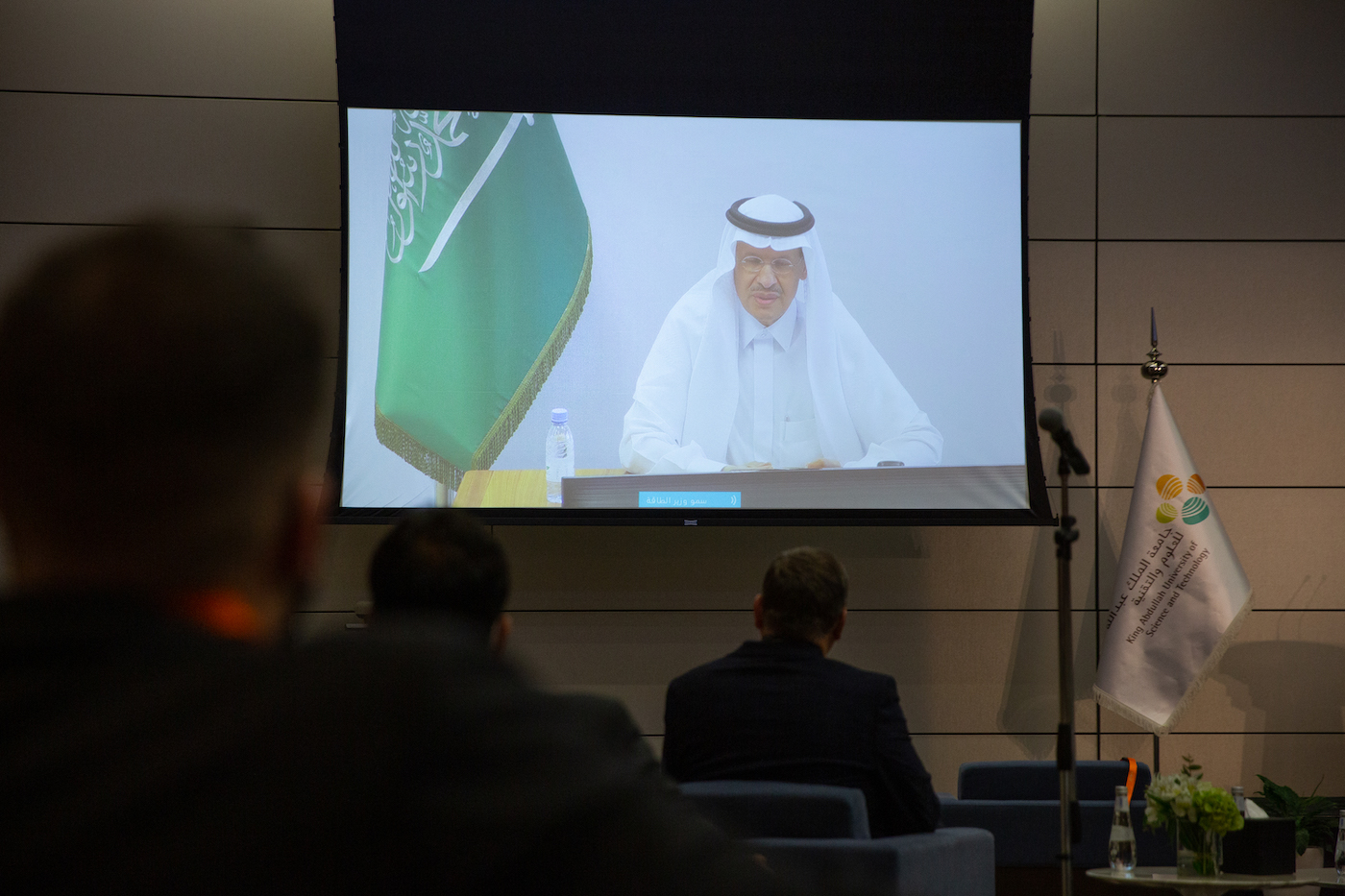Answering the call for carbon management

KAUST President Professor Tony Chan opening the KAUST Circular Carbon Initiative in front of delegates and guests from kingdom wide. The launch was live streamed on KAUST official YouTube and Facebook on Dec 1 and 2, 2020.
"KAUST has always been a pioneer on the pathway to innovation, and today it takes another big step along the road that will benefit the Kingdom of Saudi Arabia," said HRH Prince Abdulaziz bin Salman, Minister of Energy, at the launch of the CCI on December 1.

HRH Prince Abdulaziz bin Salman, Minister of Energy, at the launch of the CCI on December 1.

Professor Donal Bradley, Vice President for Research, welcoming delegates to the launch of the KAUST Circular Carbon Initiative, Dec 1, 2020.
"KAUST is in a strong position to maximize its impact in this arena. With this initiative we will accelerate the implementation of new technologies and contribute to building a more sustainable future for everyone" commented Professor Jorge Gascon, the CCI lead.

KAUST student, Afnan Albatati, under the supervision of professor Thomas Anthopoulos, demonstrates hydrogen generation through renewable solar energy. Pictured from L-R; Afnan Albatati, Sulaiman Thunayan (Government Affairs VP), Seif Usher (HM Consul-General, British Consulate) and Ahmad Al Khowaiter (Chief Technology Officer, Saudi Aramco).
The CCI has five sustainable thrusts:
CO2 capture
This goal involves the capture, conversion and storage of atmospheric CO2 to reduce the impacts of climate change. Novel materials and technologies developed at KAUST directly capture CO2 from the air and at the source of emissions.
Nature-based solutions
Blue Carbon approaches reduce CO2 levels while enriching terrestrial and ocean ecosystems. Restoring mangrove and seagrass habitats, recycling CO2 with bacterial systems, and farming algae are among the solutions targeting climate change through mitigation and adaptation.
Geo-solutions
This goal explores and quantifies the potential of geothermal energy and geological storage, including rock-based chemistry approaches. Geo-based storage solutions can lead to enhanced oil recovery and contribute to sustainable ground energy use.
E-fuels
Novel fuel production redefines CO2 as a valuable material. E-fuel developments include reusing CO2 in combination with green hydrogen, and converting materials such as green and blue ammonia, formic acid, methanol and syngas for carbon free and low carbon mobility.
Cross-cutting
This thrust focuses on the integration of renewable energy sources and energy efficient technologies coupled with artificial intelligence to improve urban planning and operations. Projects include next generation solar cells, hydrogen production, smart decentralized wastewater treatment, novel air conditioning solutions, and energy saving lights for smarter homes and neighborhoods.


"With the recent launch of the KAUST CCI, we will build an even stronger network of researchers at all career stages to thoroughly test and optimize our science and engineering advances and fully contribute to the ongoing efforts of the Kingdom to implement the CCE National Program," commented Vice President Bradley.
To learn more about the KAUST Circular Carbon Initiative please visit the
website.

